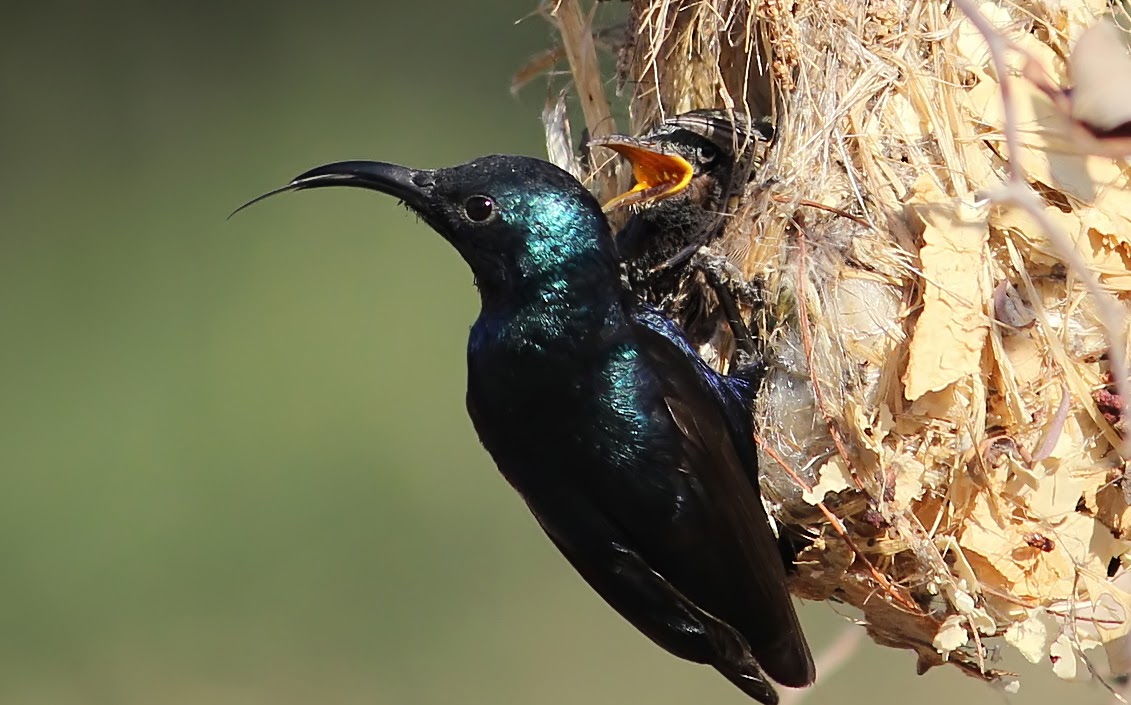Why Birds Build Nests
Birds build nests to have a safe place for their eggs and babies. Each type of bird makes its nest a little differently, depending on what they need to keep safe and what's around them. Some birds make nests that hang from trees, while others just use a spot on the ground.
After the baby birds grow up and leave, the nest is usually left behind. This might seem strange, but it's actually smart. Old nests can have bugs and germs that might make baby birds sick. By leaving the nest, they stay healthier. Also, leaving the nest means birds can move around freely. They can find new places to live, look for food, and stay safe. This helps them survive and find what they need.
Many birds don’t just build one home. They might have several homes in different places as they move with the seasons. This traveling lifestyle is especially true for migratory birds, who travel long distances from cold places to warm places as the seasons change.
Different Kinds of Bird Nests
India with its diverse environments including dense forests, vast wetlands, arid deserts, and high mountain peaks - is home to a wide variety of bird species. Each of the habitat has its own challenges, so birds have come up with many clever and innovative ways to build their nests. These nests are not just about creating shelter but they show us how smart and adaptable birds can be. Let’s look at some of the intersting nests that birds make.
The Hanging Nests of Purple Sunbird
Purple Sunbird, small and vibrant bird found across India, build compact, hanging nests. These nests resemble a small pouch and are delicately woven from fibers, spider webs, and other fine materials. They often attach their nests to the tips of thin branches, which sway with the wind and make it harder for predators to reach the nest.
The Weaver Bird’s Architectural Marvels
One of the most remarkable nest builders found in India is the weaver bird, particularly the Baya Weaver. These birds are famous for their expertly woven nests, which are true feats of avian architecture. The males weave these elaborate structures from strips of leaves, grasses, and twigs, creating a hanging retort-shaped nest with a long tube leading to the entrance. These nests are usually built on thorny trees or over water bodies, which provide added protection against predators.
The Tailorbird’s Sewn Leaves
The common tailorbird, found throughout India, constructs one of the most unique nests in the avian world. It uses its sharp beak as a needle to sew leaves together to form a cradle in which it builds its nest. Inside this stitched leaf, the tailorbird lines its nest with soft materials like plant fibres, making it a cozy environment for its eggs.
The Floating Nests of Grebes
The Little Grebe, often found in the wetlands of India, builds a floating nest. These nests are made from wet plant material and are anchored to aquatic plants. This design not only hides the nest from predators but also rises and falls with changes in water level, protecting the eggs from flooding.
The Mud Nests of Swallows
Swallows, such as the Indian Cliff Swallow, build their nests almost entirely out of mud. They collect wet mud in their beaks and build cup-shaped structures against cliffs, walls, or even human structures. These nests are often found in large colonies, which provides a measure of safety in numbers from predators.
Intersting fact: In contrast, some bird species in India, related to swallows - the swiftlets; create nests from their saliva, which hardens to form a solid structure. While not commonly used for culinary purposes in India, these nests are highly prized in other parts of Asia, especially Southeast Asia, where they are harvested to make the delicacy known as bird's nest soup.
Conclusion
Bird nests are not homes in the traditional sense where birds return to relax; instead, they are functional structures built to ensure the safety of their chicks during the breeding season. Birds spend most of their time away from these nests, engaging in activities like foraging and exploring. Even when the chicks have hatched, they do not typically stay in the nest at night unless necessary. Instead, they often watch over their young from a distance. By minimizing their time in and around the nest, birds further reduce the risk of drawing attention from potential threats, emphasizing their ongoing strategy for survival and protection.
Did you know there is a group of birds that don't build their own nests at all? Instead, they lay their eggs in the nests of other bird species, leaving the unsuspecting host birds to incubate and raise other chicks as of their own. This fascinating survival strategy bypasses the need for building nests and allows these parasitic birds to focus their energy elsewhere.







0 comments :
Post a Comment